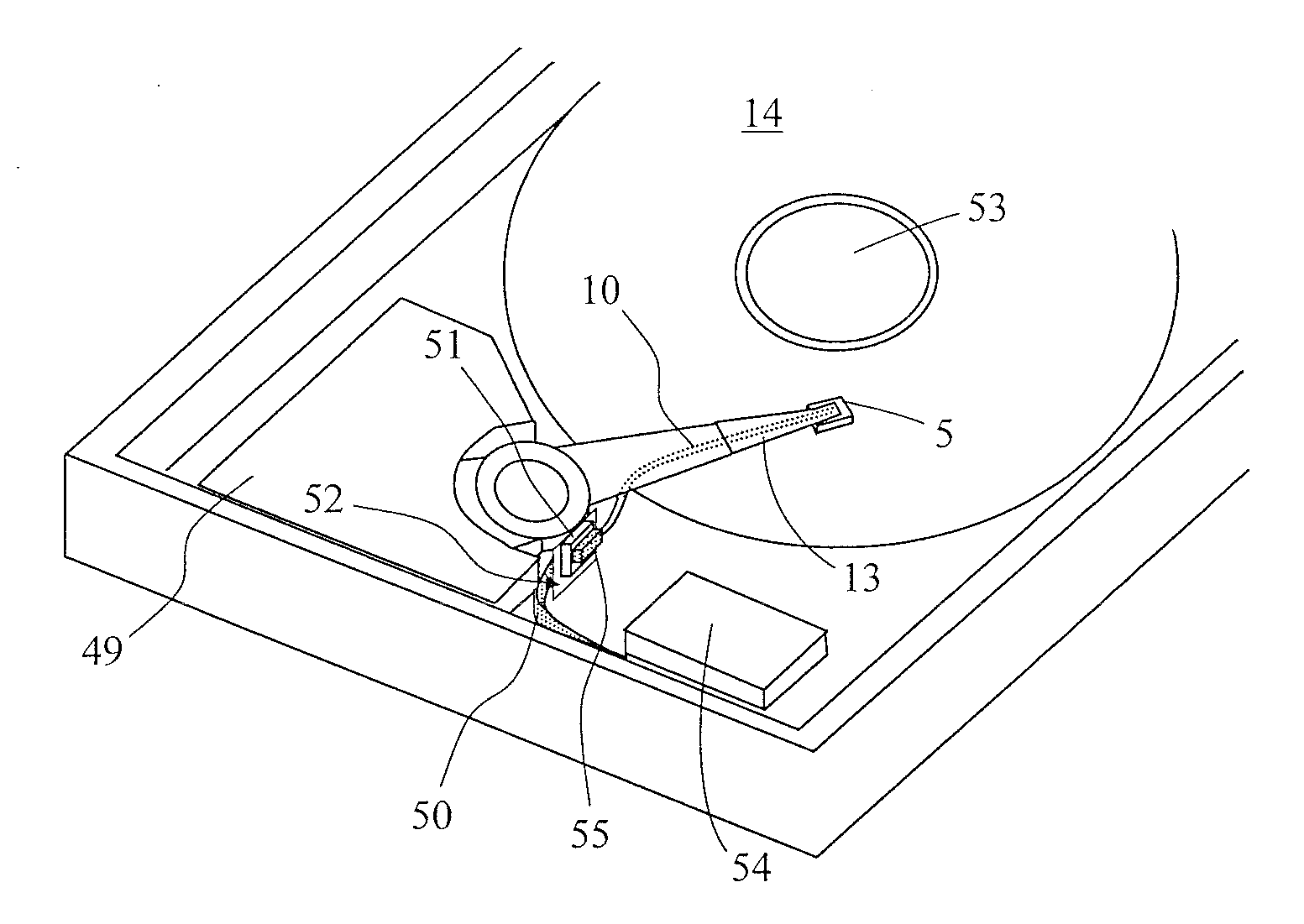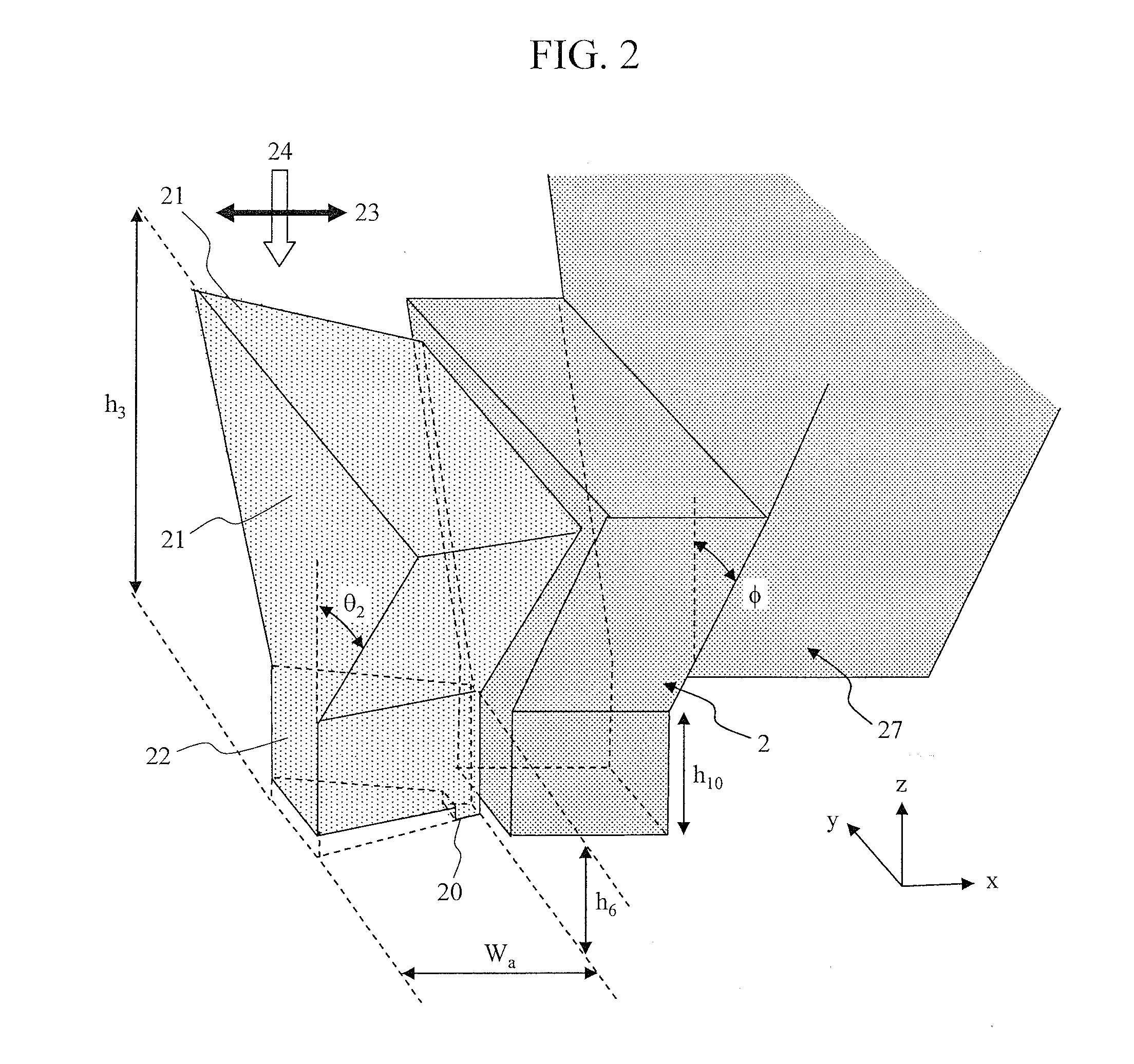Head for thermal assisted magnetic recording device, and thermal assisted magnetic recording device
a recording device and magnetic recording technology, applied in the field of head for thermal assisted magnetic recording device, can solve the problems of reducing the efficiency of optical near field generation, deterioration of scatterer, etc., and achieve the effect of increasing the optical near field intensity, avoiding temperature rise of scatterer, and increasing the volume of scatterer
- Summary
- Abstract
- Description
- Claims
- Application Information
AI Technical Summary
Benefits of technology
Problems solved by technology
Method used
Image
Examples
Embodiment Construction
[0069]Description will be given below with regard to embodiments of the present invention with reference to the accompanying drawings.
[0070]FIG. 1 shows a configuration example of a thermally assisted magnetic head 100 according to the present invention.
[0071]A semiconductor laser having a wavelength of 780 to 980 nm is used as a light source, and is installed near the base of a suspension (see reference numeral 55 in FIG. 39). A polymer waveguide 10 is used to transmit light from the light source to a slider 5. The polymer waveguide 10 is disposed on a flexure 16 of the suspension. A 45-degree mirror 12 is formed on an end face of the polymer waveguide 10 so that light emitted from the polymer waveguide 10 is emitted in a direction perpendicular to the upper surface of the slider 5. Although the polymer waveguide 10 is used as a waveguide for transmitting light from the light source to the slider 5 in this embodiment, any other waveguide, such as a quartz fiber or a plastic fiber, ...
PUM
| Property | Measurement | Unit |
|---|---|---|
| spread angle | aaaaa | aaaaa |
| spread angle | aaaaa | aaaaa |
| spread angle | aaaaa | aaaaa |
Abstract
Description
Claims
Application Information
 Login to View More
Login to View More - R&D
- Intellectual Property
- Life Sciences
- Materials
- Tech Scout
- Unparalleled Data Quality
- Higher Quality Content
- 60% Fewer Hallucinations
Browse by: Latest US Patents, China's latest patents, Technical Efficacy Thesaurus, Application Domain, Technology Topic, Popular Technical Reports.
© 2025 PatSnap. All rights reserved.Legal|Privacy policy|Modern Slavery Act Transparency Statement|Sitemap|About US| Contact US: help@patsnap.com



